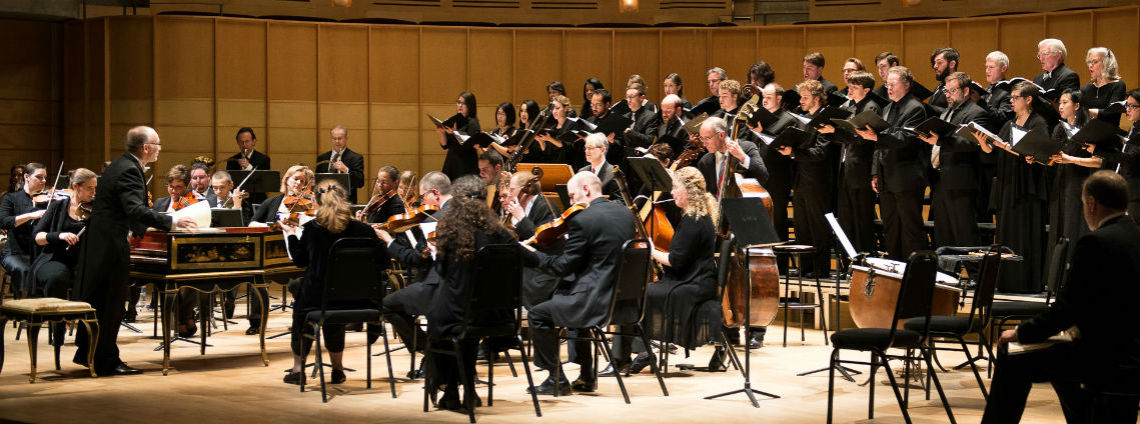Chan Shun Concert Hall at the Chan Centre for the Performing Arts | Map
Yulia Van Doren, soprano; Shannon Mercer, soprano; Krisztina Szabó, mezzo-soprano; Laura Pudwell, mezzo-soprano; Charles Daniels, tenor; J. S. Bach – Mass in B Minor – SOLD OUT!, tenor; Christian Immler, baritone; Sumner Thompson, baritone; Alexander Weimann, music director; Arion Baroque Orchestra
Bach spent the last years of his life in Leipzig, undertaking what he knew would be his final great achievement — the compilation of some of his finest vocal compositions into his magnificent Mass in B minor. Along with his monumental St. Matthew Passion, this is Bach at his most extravagant. Join us for a performance featuring over 26 period instrumentalists, 8 internationally-renowned soloists and a chorus of professional ripieniests.
Supported by Adèle Lafleur and The Drance Family Early Music Vancouver Fund
Programme
J.S. Bach’s Mass in B Minor – Programme with Texts and Translations
“Hohe Messe in h-moll”
(BWV 232)
I. MISSA
Kyrie eleison (Chorus)
Lord, have mercy upon us
Christe eleison (Duet – Soprano, Mezzo-Soprano)
Christ, have mercy upon us.
Kyrie eleison (Chorus)
Lord, have mercy upon us.
Gloria
Gloria in excelsis Deo. (Chorus)
Glory be to God on high.
Et in terra pax hominibus bonae voluntatis. (Chorus)
And on earth peace to men of good will.
Laudamus te, benedicimus te, adoramus te, glorificamus te. (Air – Mezzo Soprano)
We praise thee, we bless thee, we worship thee, we glorify thee.
Gratias agimus tibi propter magnam gloriam tuam. (Chorus)
We thank thee for thy great glory.
Domine Deus, rex coelestis, Deus Pater omnipotens. Domine Fili unigenite, Jesu Christe, Altissime, Domine Deus, Agnus Dei, Filius Patris. (Duet Soprano and Tenor)
Lord God, heavenly King, Father Almighty. O Lord, the only begotten Son, Jesus Christ Highest, Lord God, Lamb of God, son of the Father.
Qui tollis peccata mundi, miserere nobis. Qui tollis peccata mundi, suscipe deprecationem nostram. (Chorus)
Thou who takest away the sins of the world, have mercy upon us. Thou who takest away the sins of the world, receive our prayer.
Qui sedes ad dextram Patris, miserere nobis. (Air – Mezzo Soprano)
Thou that sittest at the right hand of God the Father, have mercy upon us.
Quoniam tu solus sanctus, tu solus Dominus, tu solus Altissimus, Jesu Christe. (Air – Bass)
For thou only art holy, thou only art the Lord, thou only, Christ, art most high.
Cum Sancto Spiritu in gloria Dei Patris. Amen. (Chorus)
With the Holy Ghost in the glory of God the Father. Amen.
INTERVAL
II. CREDO – SYMBOLUM NICENUM
(Credo in unum Deum) Patrem omnipotentem, factorem coeli et terrae, visibilium omnium et invisibilium. (Chorus)
(I believe in one God) The Father Almighty, maker of heaven and earth, and of all things visible and invisible.
Et in unum Dominum, Jesum Christum, Filium Dei unigenitum, et ex Patre natum ante omnia saecula, Deum de Deo, lumen de lumine, Deum verum de Deo vero, genitum, non factum, consubstantialem Patri, per quem omnia facta sunt, qui propter nos homines et propter nostram salutem descendit de coelis. (Duet – Soprano, Mezzo Soprano)
And in one Lord, Jesus Christ, the only begotten Son of God, begotten of his Father before all worlds, God of God, light of light, true God of true God, begotten, not made, being of one substance with the Father by who all things were made: who for us men and for our salvation came down from heaven.
Et incarnatus est de Spiritu Sancto ex Maria virgine, et homo factus est.(Chorus)
And was incarnate by the Holy Ghost of the Virgin Mary, and was made man.
Crucifixus etiam pro nobis sub Pontio Pilato, passus et sepultus est. (Chorus)
And was crucified also under Pontius Pilate, suffered, and was buried.
Et resurrexit tertia die secundum scripturas, et ascendit in coelum, sedet ad dexteram Patris, et iterum venturus est cum gloria judicare vivos et mortuos, cujus regni non erit finis. (Chorus)
And the third day he rose again according to the Scriptures, and ascended into heaven, and sitteth on the right hand of the Father: and he shall come again with glory to judge both the living and the dead; whose kingdom shall have no end.
Et in Spiritum Sanctum, Dominum et vivificantem, qui ex Patre Filioque procedit, qui cum Patre et Filio simul adoratur et conglorificatur, qui locutus est per prophetas. Et unam sanctam catholicam et apostolicam Ecclesiam. (Air –Bass)
And I believe in the Holy Ghost, the Lord and Giver of Life, who prodeedeth from the Father and the Son, who with the Father and the Son together is worshipped and glorified, who spake by the Prophets. And I believe in one holy Catholic and Apostolic Church.
Confiteor unum baptisma in remissionem peccatorum. (Chorus)
I acknowledge baptism for the remission of sins.
Et exspecto resurrectionem mortuorum et vitam venturi saeculi. Amen. (Chorus)
And I look for the resurrection of the dead, and the life of the world to come. Amen.
III. SANCTUS
Sanctus, sanctus, sanctus Dominus Deus Sabaoth. Pleni sunt coeli et terra gloria ejus.(Chorus)
Holy, holy, holy, Lord God of hosts. Heaven and earth are full of Thy glory.
IV. OSANNA, BENEDICTUS, AGNUS DEI
Osanna in excelsis. (Chorus)
Glory be to Thee, O Lord most high.
Benedictus qui venit in nomine Domini. (Air-Tenor)
Blessed is he, who cometh in the name of the Lord.
Osanna in excelsis.
Glory be to Thee, O Lord most high.
Agnus Dei, qui tollis peccata mundi, miserere nobis. (Air-Mezzo-soprano)
O Lamb of God, that takest away the sins of the world, have mercy upon us.
Dona nobis pacem. (Chorus)
Grant us peace.
Programme Notes
Almost all Bach’s works were composed for specific functions: the instrumental works for Prince Leopold of Anhalt-Köthen and for the Leipzig Collegium Musicum, the cantatas and Passions for religious services at Weimar or Leipzig. The exceptions are the works written for keyboard and the Mass in B minor. This gigantic work was not intended to be sung in its entirety at any specific liturgical ceremony. As Roland de Candé says, “listening to it is not compatible with the duration of the liturgy, not even as part of the most solemn ceremony.” While several of its movements are borrowed from previously written cantatas, it remains a free-standing gratuitous religious work, without specific liturgical function. In this, it is unique not only among Bach’s works, but indeed in the history of music.
Let us look at the circumstances and events of its genesis. Bach, from the first, had in mind a very precise goal. He was annoyed by the numerous vexations to which he was subjected by the authorities in Leipzig where, for nearly ten years, he had been working as Thomaskantor. The ‘most wise’ city council insisted more on his teaching Latin at the St. Thomas school than on the quality of music he was required to prepare for Sunday and holy day services at the St. Thomas and St. Nicholas churches.
On the other hand, the court of Dresden — the capital of Saxony, the state in which Leipzig was located — possessed one of the best orchestras in Europe. Musicians such as Weiss, Zelenka, Pisendel, Hasse Heinichen, plus Italians on tour (including Veracini and Lotti) assured the city a musical life of very high quality. Bach would have loved to add his name to this long list. Thus it was that, on July 27, 1733, he dedicated to the Elector of Saxony a Kyrie and a Gloria — the equivalent of a Lutheran mass — in a bid to obtain the post of court composer. The Saxon court had been Catholic since 1697, when Elector Augustus I converted so as to gain the throne of Poland, becoming King Augustus II. However, except for the question of religious obedience, there was in principal no problem of liturgical usage, for the standard texts were common to both religions. Luther had rejected neither the respective parts of the mass nor the numerous Latin texts: the Kyrie was sung on the first Sunday in Advent, the Gloria and the Magnificat on Christmas, and the Sanctus on all major feasts.
Just as Bach was dedicating his work, Augustus II died and his successor, Augustus III, was crowned King of Poland in 1734. The first two parts of what would be the B-minor Mass were probably first performed during the ceremonies in which Augustus III swore the oath of fidelity, or possibly when he came to Leipzig. Some commentators have seen the Kyrie as funeral music for the dead Elector, and in the Gloria a wish for good portents for the new one. Still with the same goal in mind, Bach was unstinting in writing homages. Within two years he had composed and directed the Leipzig Collegium Musicum in several secular cantatas composed in honor of the Elector: for the birthday of the sovereign, for that of his royal consort, for the birth of an heir, and for his coronation as King of Poland in Krakow. Despite all these efforts, it is highly unlikely that the 1733 Kyrie and Gloria were ever played in Dresden. At last, in 1736, Bach obtained the coveted post at the Dresden court; but he had to remain in Leipzig, for the post turned out to be more an honorary title than a real job. In the opinion of musicologist L.A. Marcel, the position was not a feather in Bach’s cap.
Perhaps at the request of some Dresden friends, Bach decided at the end of the 1740s to finish the B-minor Mass by setting the texts of the mass for which he had not yet written music — with the exception of the Sanctus, which he had set to music for Christmas, 1724. Thus between 1747 and 1749 — certain musicologists prefer an earlier date, however — all the sections were completed. Carl Philipp Emanuel Bach reassembled them a bit later under the name of Große Katholische Messe (Great Catholic Mass), and arranged for the Credo to be performed in Hamburg in 1786. Between 1833 and 1845 Nägeli and Simrok published the first edition of the mass in Bonn. It was entitled Hohe Messe in h-moll (High Mass in B Minor), and described as “the greatest masterpiece of all time and all people.” It was not until 1859, though, that the work was first performed in its entirety — but in a modified version, ‘improved’ according to 19th-century standards and translated into German!
Although it had not been composed in one stroke, the B-minor mass shows formidable unity. Sumptuously orchestrated — and far more often in a gleaming D major, ideal for trumpets, than in B minor, the key of the Kyrie — it is like a gigantic cantata with neither recitatives nor chorales. Only in the Credo, and there only in a few places, did Bach utilize a Gregorian cantus firmus. He recycled pieces, choruses and arias, from a dozen cantatas, but these borrowings are always rethought and reworked both as settings for Latin texts and for their general sense; and by adding a fifth voice to some four-voice choruses, Bach made them almost more perfect than the originals.
The genre of the mass demands a different and more objective treatment than that appropriate for a motet or a cantata. The emotion that Bach breathed into his mass may not have the intensity of that in his Passions, but it is more intense than the masses of his predecessors, whose polyphonic compositional techniques he used. His choral writing is contrapuntal and expresses the full range of emotions, from affliction to triumph, registered in the text, while the airs and duos are more modern and lighten the work’s general texture.
Musical symbolism, so prominent in the Passions and cantatas, is present too in the B-minor Mass. However, it serves more to underline the general sense of a section than to illustrate a specific word or expression. For instance, the violin motifs in Et incarnates est evoke the grace of the Virgin; the consubstantial nature of Father and Son is represented by imitation at the unison of the two voices in the duo Et in unum Dominum; the six-voice chorales of the Sanctus symbolize the six wings of the seraphims as described by the prophet Isaiah; and the change of tonality on the words homo factus est represents the change of being associated with the Incarnation.
But the reasons pushing Bach to write this Mass, the only religious vocal work of his not tailored to the needs of a specific function, remain an open question. Because of its dimensions, because of certain words not acceptable to the Catholic liturgy (for instance, altissime after Jesu Christe in the Gloria), it suits neither the Lutheran rite, in which nothing is sung after the Sanctus, nor the Catholic. Bach must have known that his work could not be played, at least in his lifetime. Maybe he wanted to rival or surpass composers, such as Caldara, Lotti, or Zelenka, who had written similar grand masses; or perhaps in the evening of his life, he wanted to propose, through his musical art, a rapprochement between the Christian churches, a musical solution to their quarrels, so contrary to the spirit of the Gospels. The two oboes d’amore in unison on unam sanctam catholicam ecclesiam would seem to suggest this.
Built on an architecture worthy of its subject and to the high standards of Bach’s genius; expressive of his personal idealism; distilling in the form of a testament the quintessence of his religious opus — many consider the Credo of the B-minor Mass to be Bach’s very last composition, later even than The Art of Fugue: the confluence of all these factors make this monumental work one of the absolute summits of Western music.
– François Filiatrault – English Translation by Douglas Kirk

Yulia Van Doren, soprano
Recognized by Opera Magazine as “A star-to-be” following her Lincoln Center debut, young Russian-American soprano Yulia Van Doren’s debut with the Toronto Symphony Orchestra was acclaimed as a “revelation… a ravishing lyric voice and an ease with vocal ornamentation that turned her into an enchanted songbird” (Toronto Star). For her last minute step-in with the Cleveland Orchestra, The Cleveland Plain Dealer praised Van Doren as an artist of “melting poignancy” and added, “To Van Doren, one could easily have listened for hours.”
Highlighting Ms. Van Doren’s 2017/18 season are appearances with Colorado Symphony (Mozart’s Requiem); Music of the Baroque (Bach’s St. John Passion); her return to Milwaukee Symphony (Bach’s Magnificat); and performances of Handel’s Messiah with Houston Symphony, Early Music Vancouver, and Philharmonia Baroque Orchestra.
Especially recognized for her work in the baroque repertoire, Ms. Van Doren has performed with the majority of the North American Baroque festivals and orchestras, and has the distinction of being the only singer awarded a top prize in all four US Bach vocal competitions.
A dedicated interpreter of repertoire off the beaten path, career highlights include creating the lead female role in the world premiere of Shostakovich’s Orango with the Los Angeles Philharmonic, directed by Peter Sellars and released on Deutsche Grammophon; two Grammy-nominated opera recordings with the Boston Early Music Festival; the modern revival of Monsigny’s opera Le roi et le fermier at Opera de Versailles, Lincoln Center and the Kennedy Center (recorded for Naxos); and a tour of Handel’s Orlando with Philharmonia Baroque Orchestra to the Mostly Mozart, Ravinia and Tanglewood festivals.

Shannon Mercer, soprano
Recognized for the luminosity and effortless agility of her voice, as well as her commanding stage presence and profound acting ability, Canadian soprano Shannon Mercer enthusiastically embraces a range of repertoire from early to contemporary music, from Francesca Caccini and Monteverdi to John Beckwith and Ana Sokolović. Shannon maintains a busy and challenging performance calendar of opera, concert, and recital engagements throughout North America and Europe while also sustaining an active recording presence, capturing some rarely performed works.
Highlights of Shannon’s 2015-2016 season include a return to the opera stage as Pamina in the Calgary Opera production of Die Zauberflöte, concerts with the Naples Philharmonic in Florida, Handel’s Messiah with the Oregon Symphony, Dean Burry’s The Mummers’ Masque with the Toronto Masque Theatre, the 20th Anniversary Gala of the Toronto Welsh Male Voice Choir and a concert with the ensemble ‘5’ at the First Chamber Music Series.
Shannon’s discography includes Trobairitz, a new disc containing songs set to poems by female troubadours in the South of France, the 2014 Juno-nominated Berlioz’s Les Nuits d’été and Palej’s The Poet and the War, two recordings of Bach’s St. John Passion, the Juno-Award winning Gloria: Vivaldi’s Angels, Vivaldi – The Return of the Angels, Salsa Baroque, O Viva Rosa, Bach and the Liturgical Year, Wales ~ The Land of Song, and others. She appears on DVD in Alexina Louie’s comic operas Burnt Toast and Mulroney: The Opera, and in Monty Python funny-man Eric Idle’s hit Not the Messiah.
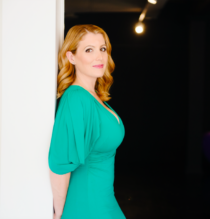
Krisztina Szabó, mezzo-soprano
Hungarian-Canadian mezzo-soprano Krisztina Szabó is highly sought after in North America and Europe as an artist of supreme musicianship and stagecraft. She is known for her promotion and performance of contemporary Canadian works. Among her many laudatory reviews, Opera Canada declared her to be an “exceptional talent” after her performance of the title role of Dido in Purcell’s Dido and Aeneas. After a performance with Tapestry Opera, the music blog, Schmopera wrote that “her instrument is one-of-a-kind and she has cemented herself as a darling of Canadian experimental music and opera…her sensibility and sensitivity to the material is truly inspiring”. In her hometown of Toronto, she has been nominated twice for a Dora Award for Outstanding Female Performance. Krisztina has recently been appointed Assistant Professor of Voice and Opera at the University of British Columbia School of Music.

Laura Pudwell, mezzo-soprano
Grammy-nominated Laura Pudwell’s reputation as a superb vocalist has been well-established as a result of her performances in London, Paris, Salzburg, Houston, Vienna and Boston. Her vast repertoire ranges from early music to contemporary works. Ms. Pudwell is equally at home on the opera, oratorio or recital stage, and has received international acclaim for her recordings.
A frequent guest of many national and international presenters, Ms. Pudwell has had the privilege of working with many outstanding conductors, including Hans Graf, Hervé Niquet, Andrew Parrott, Ivars Taurens, Bernard Labadie, Lydia Adams, Howard Dyck and Robert Cooper.
On the opera stage, she has performed across Canada with such companies as Opera Atelier, the Calgary Opera, Vancouver Early Music and Festival Vancouver, as well as with the Houston Grand Opera and the Cleveland Opera. Her many roles include Cornelia (Giulio Cesare), Marcelina (Le Nozze di Figaro), Nerone and Arnalta (L’Incoronazione di Poppea) and Dido/Sorceress (Dido & Aeneas), which also was an award-winning recording performed by Ms. Pudwell in Paris.
Laura Pudwell is a regular participant in many festivals, including Festival Vancouver, the Ottawa Chamber Music Festival, the Banff Summer Festival, the Elora Festival, the Boston Early Music Festival and the WinterPark Bach Festival in Orlando.
Ms. Pudwell appears regularly with the Toronto Consort, and is a frequent guest soloist with Tafelmusik, the Calgary Philharmonic Orchestra, the Toronto Chamber Choir, Symphony Nova Scotia, the St. Lawrence Choir, Le Concert Spirituel and the Menno Singers.
Ms. Pudwell lives in Kitchener-Waterloo, Ontario with her husband and two children.
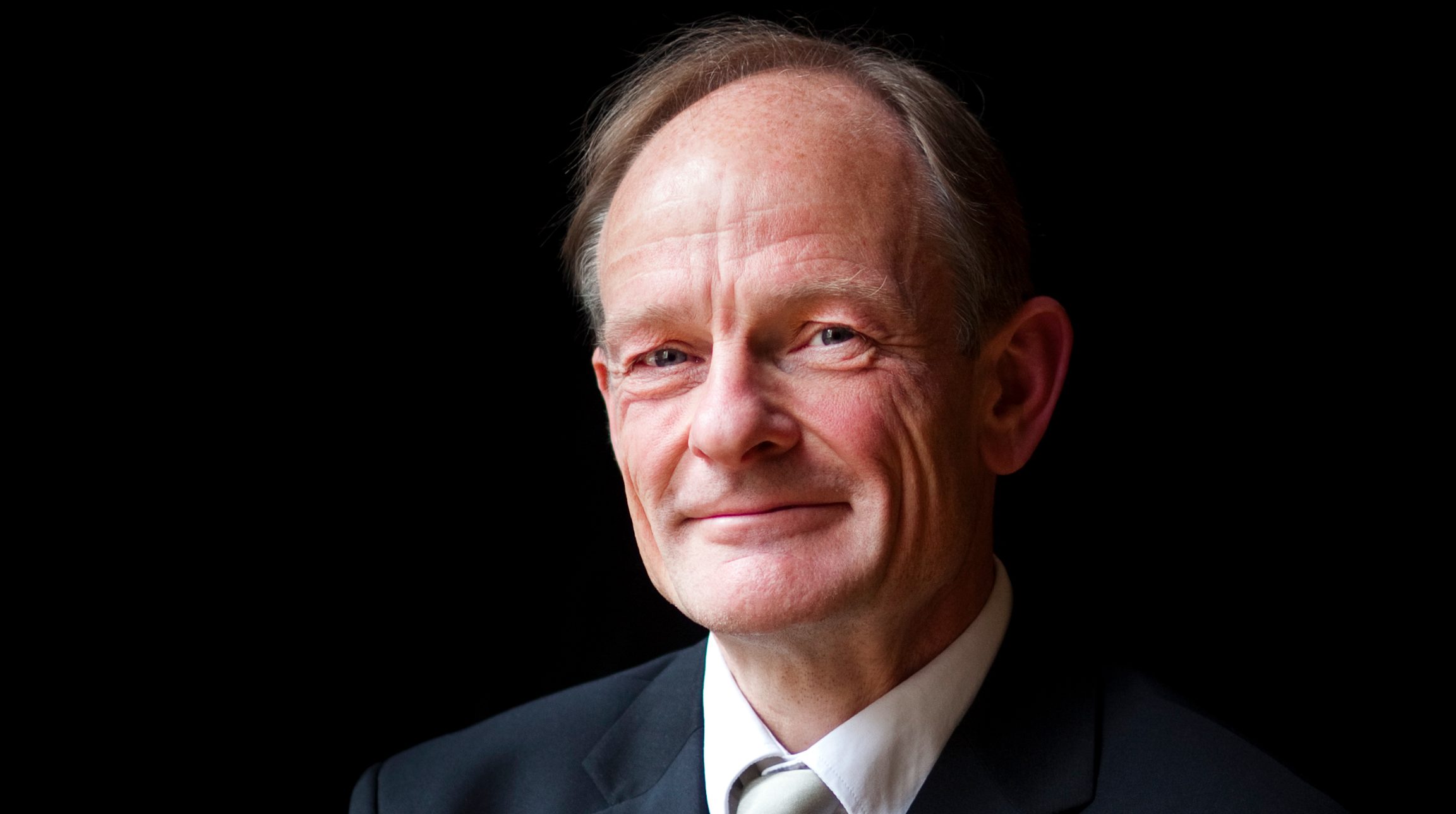
Charles Daniels, tenor
Charles Daniels is a noted interpreter of Baroque music, though his narrative gifts are praised for music as diverse as Machaut Virelais and Graham Treacher’s Visions (2016). His recordings include Monteverdi’s L’Orfeo with Andrew Parrott, Bach’s Matthäus Passion with the Bach-Stiftung; Schütz Weihnachtshistorie, Monteverdi’s Vespers and Purcell’s Fairy-Queen with the Gabrieli Consort; Heracleitus with the Bridge Quartet and Lambert airs with Fred Jacobs; Kilar’s Missa Pro Pace with the Warsaw Philharmonic; much Bach and recent Purcell releases with the King’s Consort.
He created the dual role of Ulisse and John Gregory Dunne to critical acclaim in last year’s Bayerische Staatsoper production of Il Ritorno d’Ulisse/Jahr des magisches Denken His concert appearances span the intimate and the grand, from BBC Radio 3 recitals with lutenist Elizabeth Kenny, domestic music of Bach for Nederlandse Bach Vereniging and Handel Chandos Anthems in their original setting of the Canons Estate church, to performances of Britten’s War Requiem (Canterbury, Lille) and Elgar’s Dream of Gerontius (Cardiff, Wroclaw). Recent concerts include Dowland in Japan with Les Voix Humaines, Viadana in Verona and Switzerland with Bruce Dickey, a Weckmann programme in Vienna’s Konzerthaus and the 50th birthday celebration in Oxford of Andrew Parrott’s Taverner Consort.
Charles’ reconstructions of Gesualdo’s Sacrae Cantiones à6 have been premiered by the Gesualdo Consort of Amsterdam and his completion of Purcell’s court Ode Arise my Muse was broadcast on Radio-Canada during the Montréal Baroque Festival. He is delighted to return to EMV for this summer’s Festival.
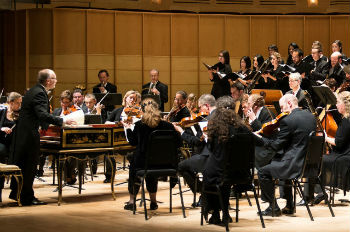
J. S. Bach – Mass in B Minor – SOLD OUT!, tenor
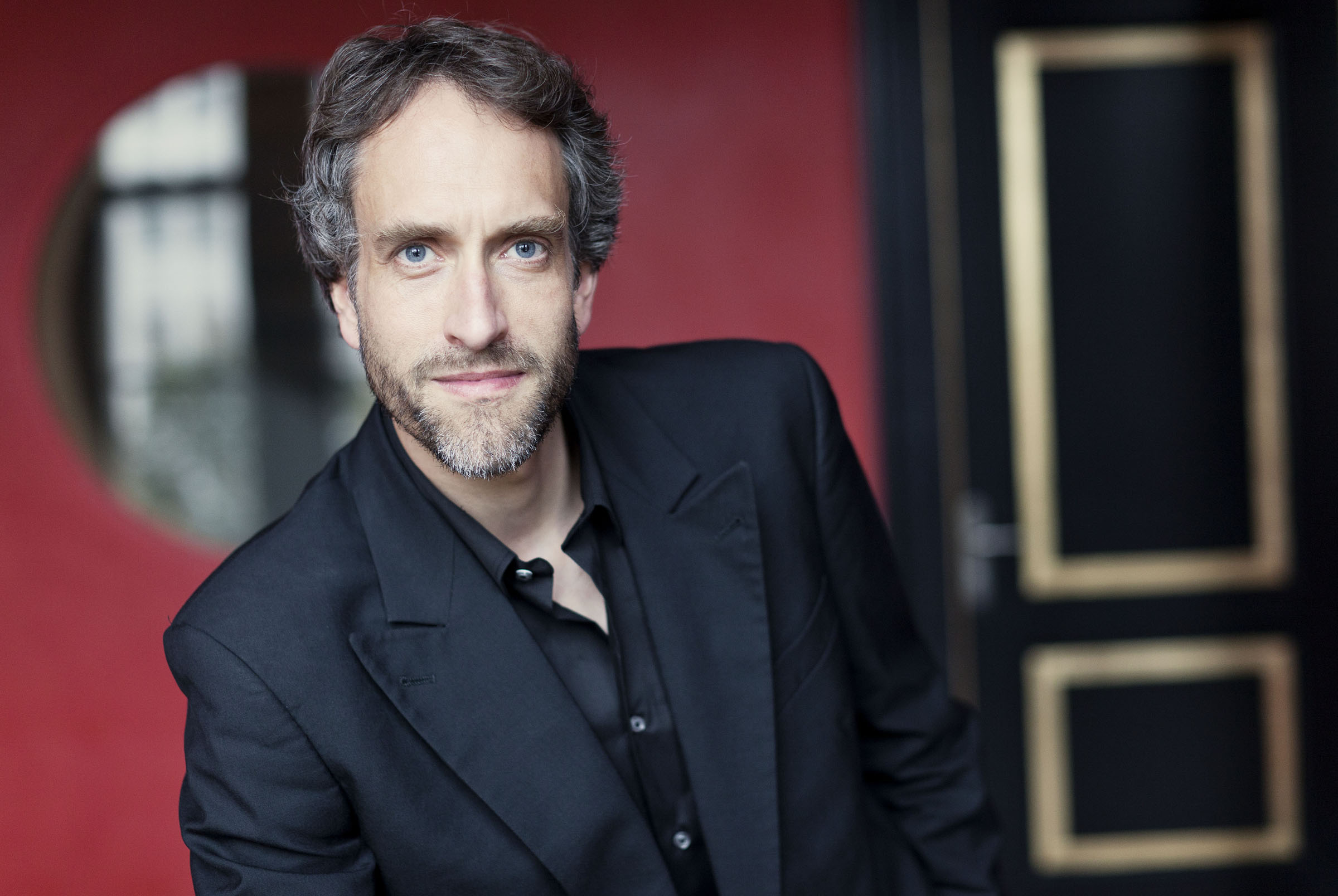
Christian Immler, baritone
German baritone Christian Immler studied with Rudolf Piernay and won the International Nadia et Lili Boulanger Competition in Paris. Christian has worked with such conductors as Harnoncourt, Minkowski, Bolton, Conlon, Herreweghe, Harding, Parrott, Corboz, Suzuki, Dantone, Antonini, Nagano, Christie, Christophers, Bernius, Alarcón, and Pichon, performing at places such as the Amsterdam Concertgebouw, the Salzburg and Lucerne Festivals, and the BBC Proms.
On stage he appeared at Opéra Comique Paris, the Grand Théâtre Genève, New Israeli Opera, and the Boston Early Music Festival. A keen recitalist, Christian has been invited to perform at Wigmore Hall, the Frick Collection in New York, the Salzburg Mozarteum, and Tonhalle Zurich, this last with pianist Helmut Deutsch.
His more than forty recordings have been awarded prizes such as the Diapason d’Or, Diapason Découverte, Diamant d’Opéra, Echo Klassik Preis, France Musique’s Record of the Year, and a Grammy nomination. Christian is Professor of Voice at the Musikhochschule in Lausanne/Fribourg. His website is at www.christianimmler.com.
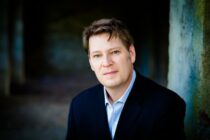
Sumner Thompson, baritone
Praised for his “elegant style” (The Boston Globe), Sumner Thompson is one of today’s most sought-after baritones. He has performed across North America and Europe as a soloist with renowned ensembles such as Concerto Palatino, Tafelmusik, Apollo’s Fire, Les Boréades de Montréal, Les Voix Baroques, the King’s Noyse, Mercury Baroque, and the symphony orchestras of Charlotte, Memphis, and Phoenix. Recent highlights include Monteverdi’s Vespers of 1610 and the new Vespers of 1640 with the Green Mountain Project; Buxtehude’s Membra Jesu Nostri with Les Voix Baroques and Houston’s Mercury Baroque; Mozart’s Requiem at St. Thomas Church in New York City; a tour of Japan with Joshua Rifkin and the Cambridge Concentus; and Britten’s War Requiem with the New England Philharmonic. He most recently appeared with EMV last year in From War to Peace: Heinrich Schurz and His Time (November) and Festive Cantatas: JS Bach Magnificat (December).
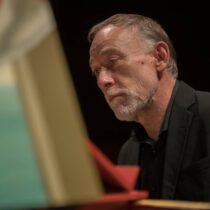
Alexander Weimann, music director
Alexander Weimann is one of the most sought-after ensemble directors, soloists, and chamber music partners of his generation. After travelling the world with ensembles such as Tragicomedia, Cantus Cölln, the Freiburger Barockorchester, Gesualdo Consort and Tafelmusik, he now focuses on his activities as Music Director of the Pacific Baroque Orchestra in Vancouver, Music Director of the Seattle Baroque Orchestra, and regular guest conductor of ensembles including the Victoria Symphony, Symphony Nova Scotia, Arion Baroque Orchestra in Montreal and the Portland Baroque Orchestra.
Alex was born in Munich, where he studied the organ, church music, musicology (with a summa con laude thesis on Bach’s secco recitatives), theatre, mediæval Latin, and jazz piano, supported by a variety of federal scholarships. From 1990 to 1995, he taught music theory, improvisation, and Jazz at the Munich Musikhochschule. Since 1998, he has been giving master classes in harpsichord and historical performance practice at institutions such as Lunds University in Malmö, the Bremen Musikhochschule, the University of California (Berkeley), Dartmouth College (New Hampshire), McGill University, Université de Montréal, and Mount Allison (New Brunswick). He now teaches at the University of British Columbia and directs the Baroque Orchestra Mentorship Programme there. He has received several JUNO and GRAMMY Award nominations – most recently, for the album Nuit Blanches with the Pacific Baroque Orchestra and Karina Gauvin.
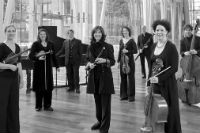
Arion Baroque Orchestra
Founded in 1981 in Montreal, Arion Baroque Orchestra is now a cornerstone in the world of early music on period instruments in Quebec and Canada. The clarity and freshness of Arion’s interpretations have been remarked upon since its first concerts; the delicacy of its readings of well-chosen and varied works has never wavered in more than 30 years. Constant attention to detail has earned the orchestra, led by the enlightened artistic vision of flutist Claire Guimond, a place among the most renowned early music ensembles in North America and throughout the world.
The Orchestra offers a prestigious Montreal concert Series featuring more than twenty musicians and with the participation of internationally known guest conductors. Arion has hosted such celebrated conductors as Stefano Montanari, Jaap ter Linden, Monica Huggett, Christophe Rousset, Barthold Kuijken, Rachel Podger and Elizabeth Wallfisch, to name just a few. Arion has been awarded many prizes and grants and tours regularly in the United States, Mexico, Europe and Japan, as well as Quebec and Canada. Arion know holds an impressive discography of 27 titles. In 2001, Claire Guimond founded early-music.com, dedicated to furthering excellence on period instruments in early music. Largely centered on Arion recordings, early-music.com contributes undeniably to the prestige of these artists thanks to its international diffusion. For Arion’s discography, please browse through the early-music.com website.

